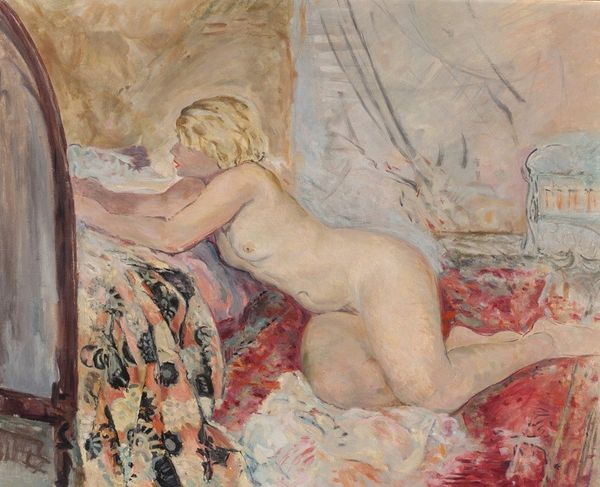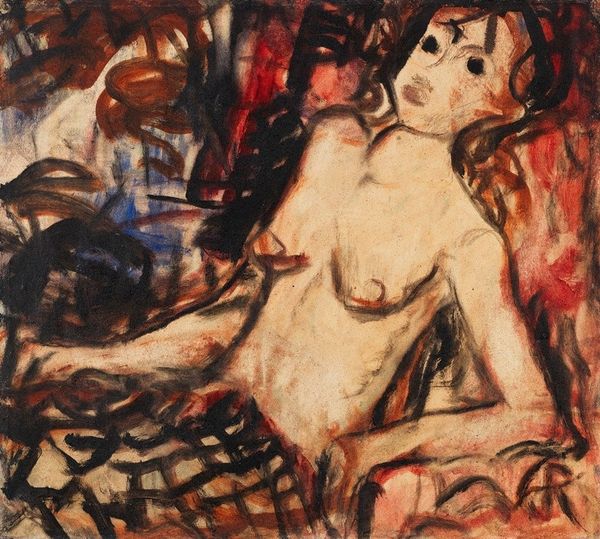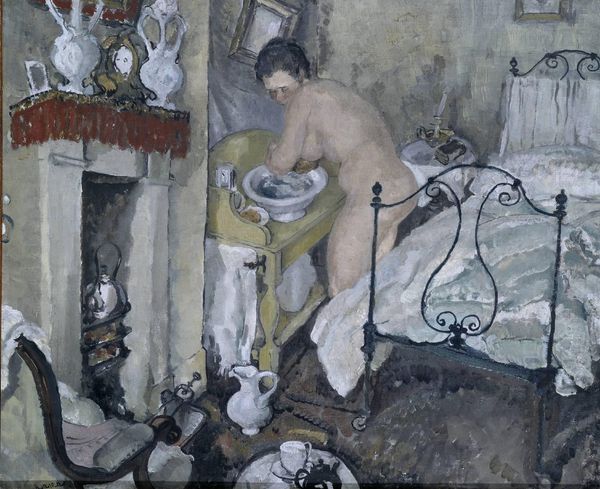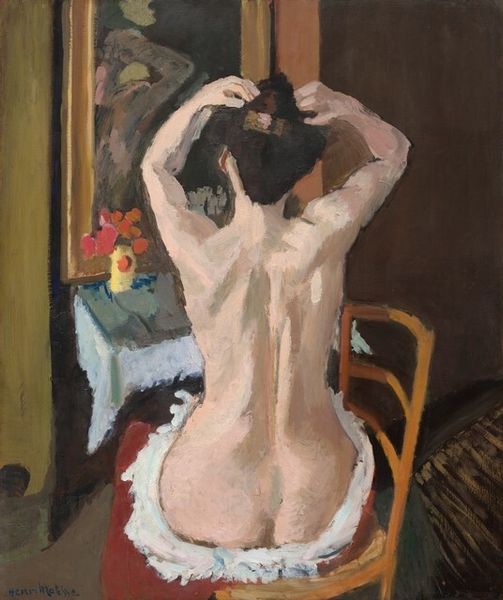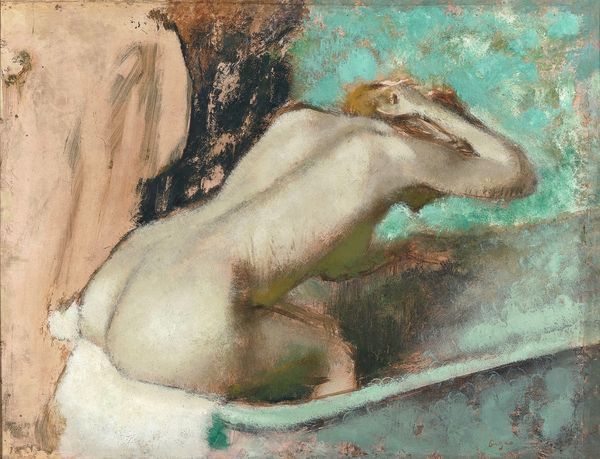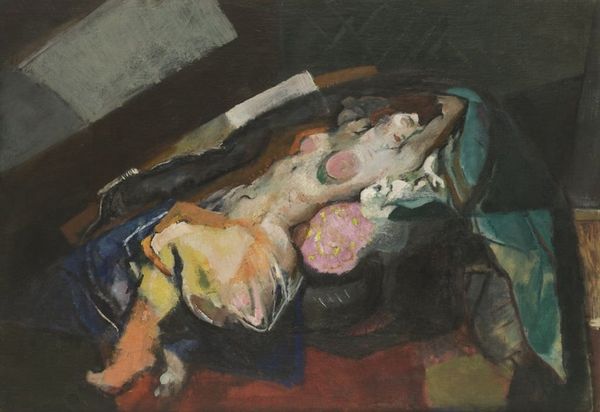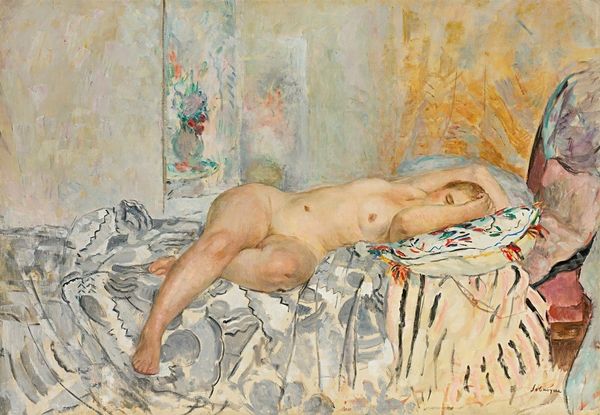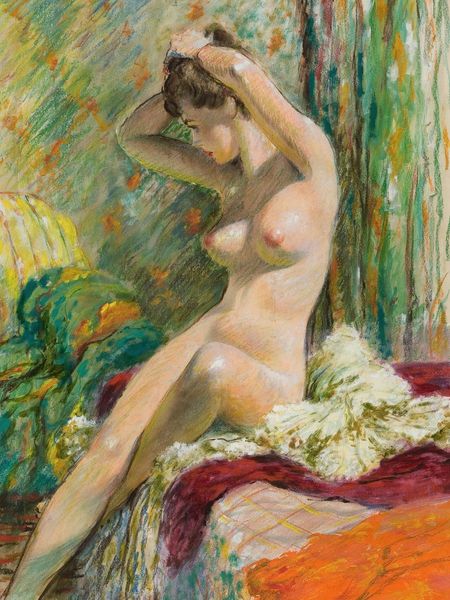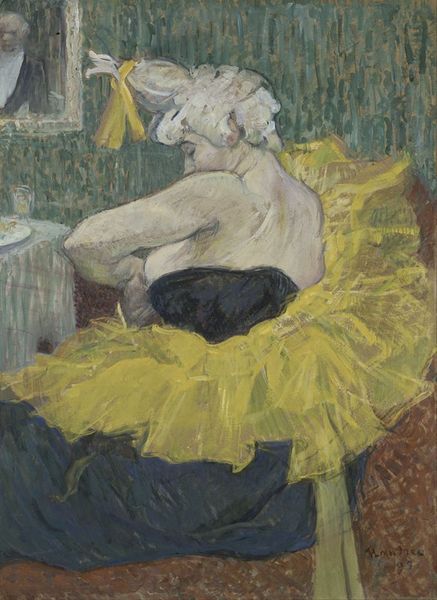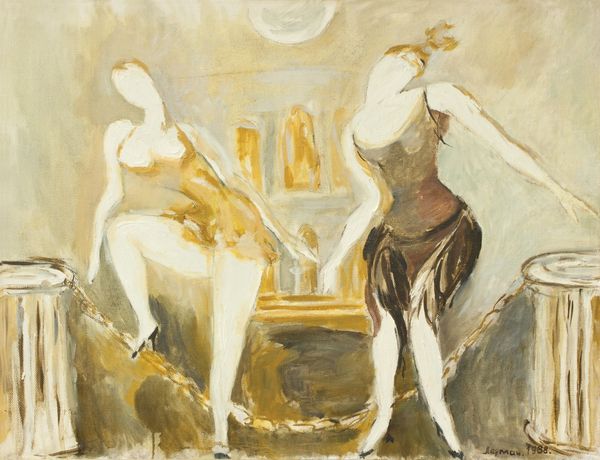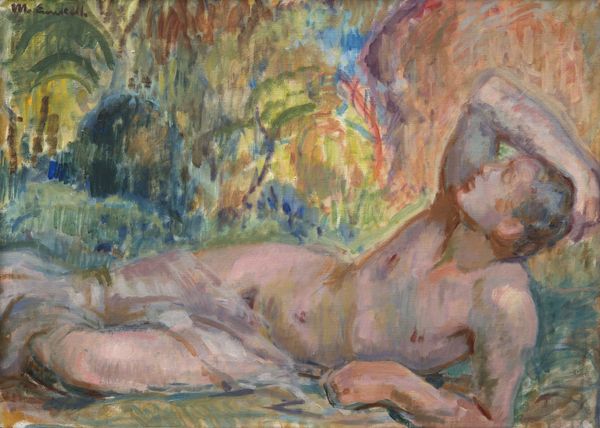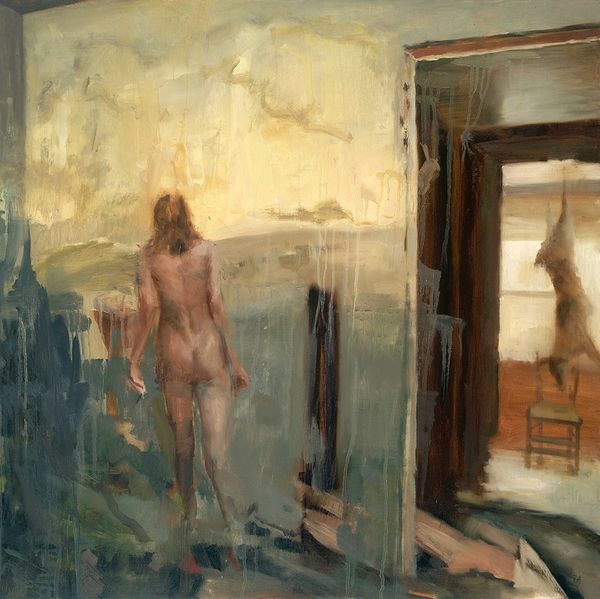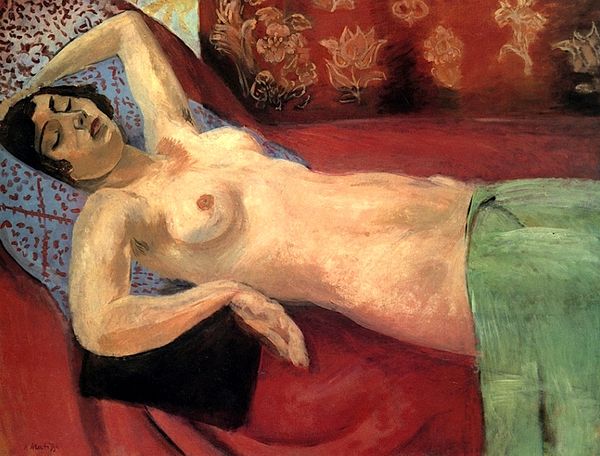
Dimensions: support: 914 x 1219 mm
Copyright: © The estate of Rodrigo Moynihan | CC-BY-NC-ND 4.0 DEED, Photo: Tate
Editor: Here we have Rodrigo Moynihan’s “Interior with a Nude and a Still Life,” a truly evocative painting housed right here at the Tate. It feels so intimate, almost like stumbling upon a private moment. What do you make of it? Curator: It's wonderfully enigmatic, isn't it? The brushstrokes are so loose, almost feverish, like a memory half-recalled. Look at how the nude almost melts into the background. And that still life – is it comforting, or a little…decaying? Editor: I see what you mean about the decaying feeling! Do you think that was intentional? Curator: Maybe. Or perhaps it's just life, being rendered with honesty. Moynihan doesn’t shy away from the fleeting nature of beauty, does he? It's a brave vulnerability, laid bare on the canvas. Editor: I hadn't considered it that way, as brave and vulnerable. It definitely changes how I see the piece. Curator: That's the joy of it all, isn't it? A new lens, a fresh perspective.
Comments
tate 8 months ago
⋮
http://www.tate.org.uk/art/artworks/moynihan-interior-with-a-nude-and-a-still-life-t01583
Join the conversation
Join millions of artists and users on Artera today and experience the ultimate creative platform.
tate 8 months ago
⋮
The lingering influence of Objective Abstraction can still be detected in loose painterly passages in this picture, particularly at the top right. Moynihan abandoned abstraction partly owing to its seeming isolation from contemporary life. He returned to representational painting as if for the first time, though influenced by great masters from Velasquez to Picasso. The still life in this picture was repainted several times. The vase is based on eighteenth century Spanish glass. Soon afterwards Moynihan, a visitor to the Euston Road School, began to paint in a more clearly defined manner. Still life and figures in interiors, along with portraits, would become some of his principal themes. Gallery label, September 2004
